Alpha in the cathouse….
It was a photo-call too good to be missed. Shirley Kilpatrick reported for duty at Europe’s biggest brothel where fashion photographer Steve Thornton was staging a publicity stunt for California Sunbounce. Welcome to the House of the Rising Sunbounce, also known as Pascha.
The first person we saw in the empty corridors of the photokina 2010 halls, the day before the show opened, was Steve Thornton. You can’t really miss a six-foot-something figure with an extra six inches of hat, cowboy boots and everything except the spurs and chaps, even from behind.
“That’s Steve Thornton”, said David. “He’s the guy you are going to the brothel with on Thursday…”
Cologne has always been known for its robust seamy side. When David went to one of his first photokinas with John Battison and David Shaw from Japanese Cameras Ltd – importers of Minolta in the 1970s – he was courteously treated. “After you”, said Messrs Shaw and Battison as they hit yet another hostelry. Gay bars were not common in Britain in 1976, and it was a minute before he realised they had stayed outside the revolving door…
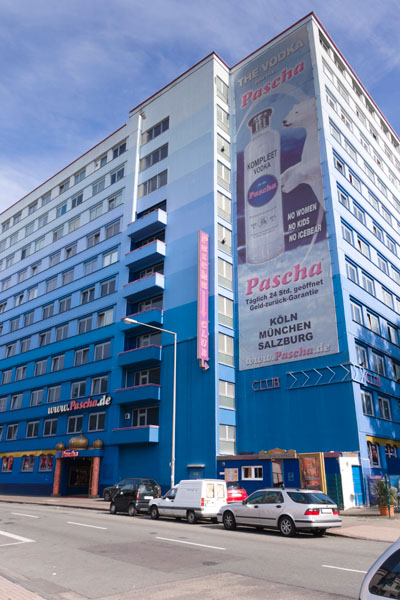
But this location, Pascha, had to be seen. It is Europe’s largest legal brothel, a multi-storey block just outside the inner city limits of Cologne (it would be illegal within them). It is claimed to have 120 working girls, and one thousand customers a day. Thursday mornings must be quiet, as they seemed able to close down the main cabaret and lapdancing bar to allow German lighting and accessory makers California Sunbounce to stage their model shoot with invited press and TV crews.
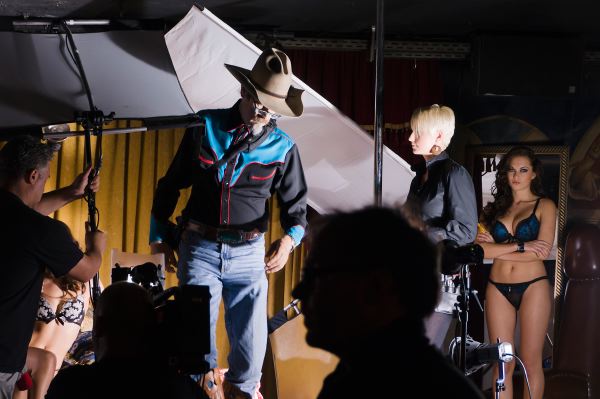
Because of its location, Pascha was a taxi fare away – half the taxis in Cologne seem to carry advertising for it, and unless a visitor already knew the true identity of the business you’d assume it was a nightclub. Indeed, it does stage music gigs and many will visit it just for the floorshow.
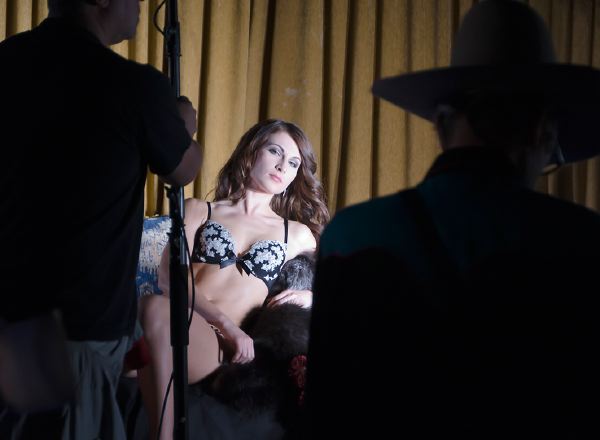
In the cocktail-cabaret bar, with Thornton’s halogen video lights positioned on stands or waved on poles by assistants, the grubby state of the decor was only too clear. The floor carpet stuck to my sandals and the beige curtain behind the first model to ‘take the stage’ had threadbare patches. The furnishings felt as if you really wouldn’t want to touch them without rubber gloves on, let alone lounge around posing in undies. Pascha may be the biggest cathouse in the west, but it didn’t smell wonderful and looked about as tired and well-used as its statistics suggest. Our models, of course, were unconnected with the venue and along with make-up and stylist Davina took the occasional wry look at their location.
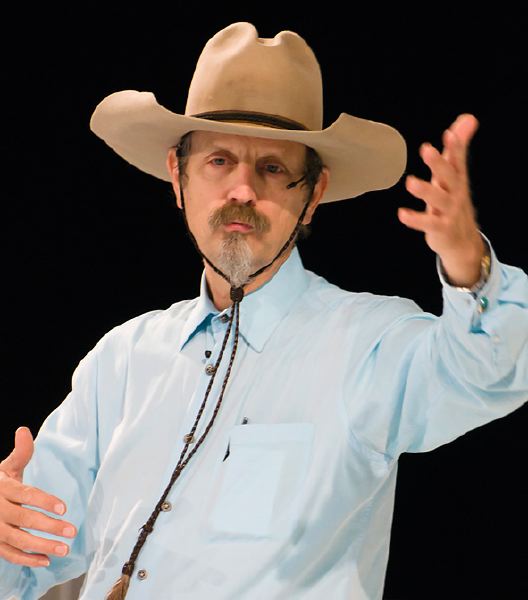
As for Steve Thornton, we had stopped by one stand during photokina where he was holding forth with a lecture. He was animated, gesturing, extrovert and kept his audience attentive.
At Pascha, he did less to explain what he was doing with the lighting, or how he was using the large California Sunbounce reflector panels which were the key to controlling such small, hard light sources. His instructions to his crew were not aimed at the posse of journalists and press photographers assembled to witness the event. I had thought he would be conducting the shoot more as a masterclass or demonstration, but it was very much a working session with one exception, permission for the invited media to take their own pictures and publish them as we are doing here.
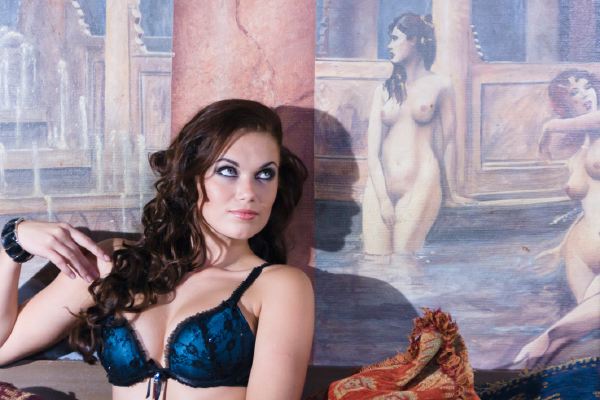
This is unusual, but our models knew the score and posed for all of the press gang in turn. The second girl, working in front of a not-quite-good-enough Turkish bath wall painting, had more direct communication but from my angle the lighting cast a strong face profile shadow. When this worked with a flattering face silhouette and visible shadows from her eyelashes, it was good; when it cast the wrong shaped shadow from her profile, much less so.
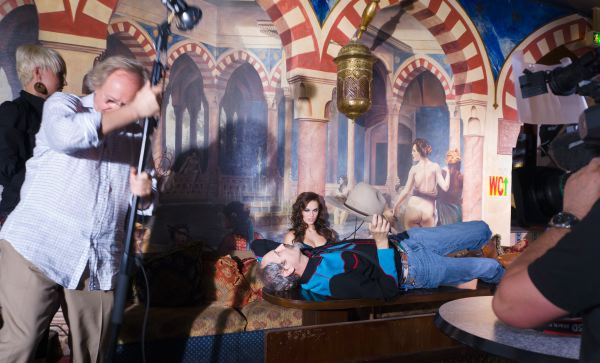
Thornton worked hard and his crew moved the halogen lights and Sunbounce panels round while dodging both the still cameras and the video crew. I was shooting with my Sigma 18-250mm ƒ3.5-6.3 OS stabilised zoom, which proved more than useful at the long end. Originally, I planned to use just a 28mm ƒ/2 Minolta RS on my Alpha 700, but this would not have got me either the overall scenes or the close-up final shots.
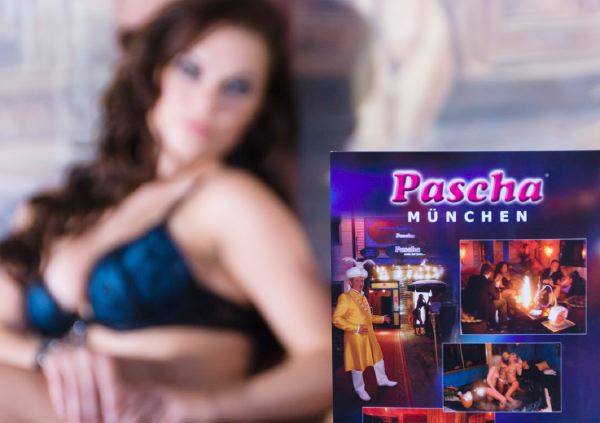
The A700 was set to use auto ISO all the way to 1600, as we have found that Adobe Camera Raw 6.2 (or Lightroom 3.2) makes such excellent noise-free conversions it is safe to use even 1600 for model shots. At this setting, typical exposures were around 1/80th wide open at ƒ6.3. The slight hint of softness in lens at full apertures was flattering; a few shots stopped down in stronger direct light were cruel to skin, to say the least.
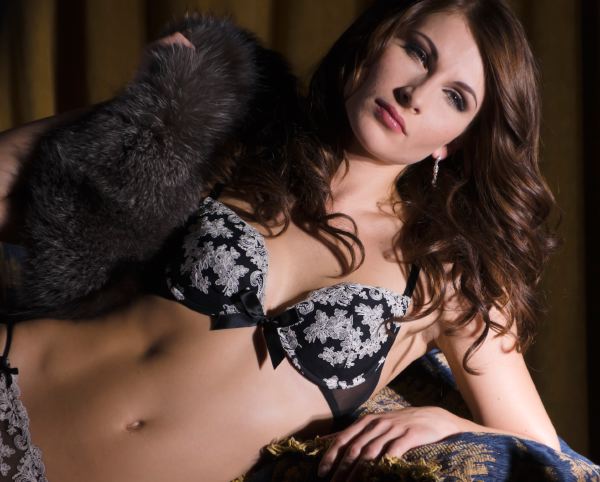
Well, it may be the first and last time I will be able to claim I went to work in a brothel. German social morals accept this place in a way which I think real Californians might not. The brand name makes you think it’s an American product, but California Sunbounce was developed in Germany and all their early publicity shots were taken on the sunny shores of the Baltic!
They also make the SunSniper camera sling (used by Thornton) and they are imported to the UK by The Flash Centre.
– Shirley Kilpatrick
All photographs are © Shirley Kilpatrick and use is reserved in connection with media coverage of this event. You can view and download full size (as cropped for repro) images from the full set of shots as a 13MB zip file from our Subscriber Pages.










